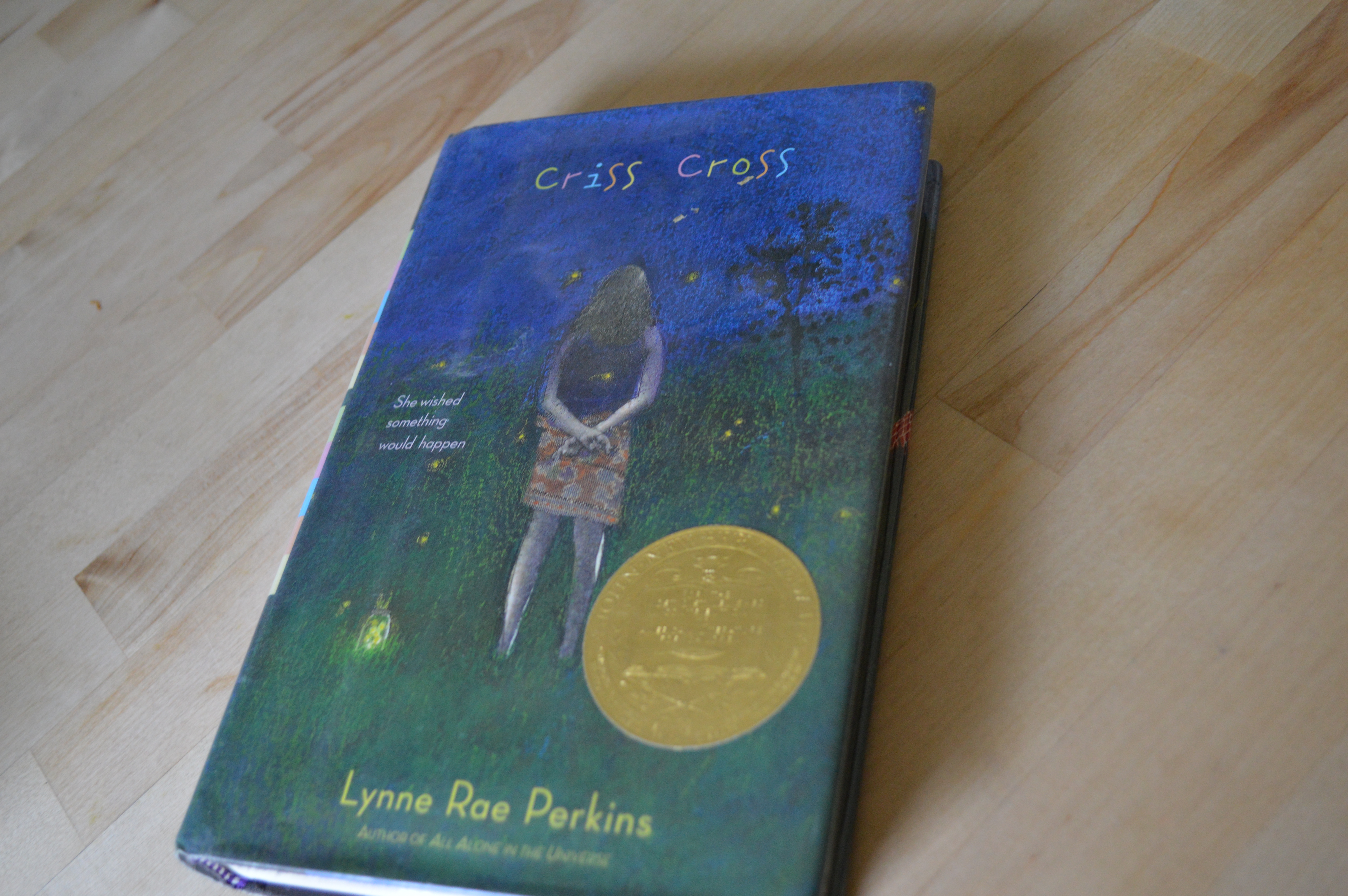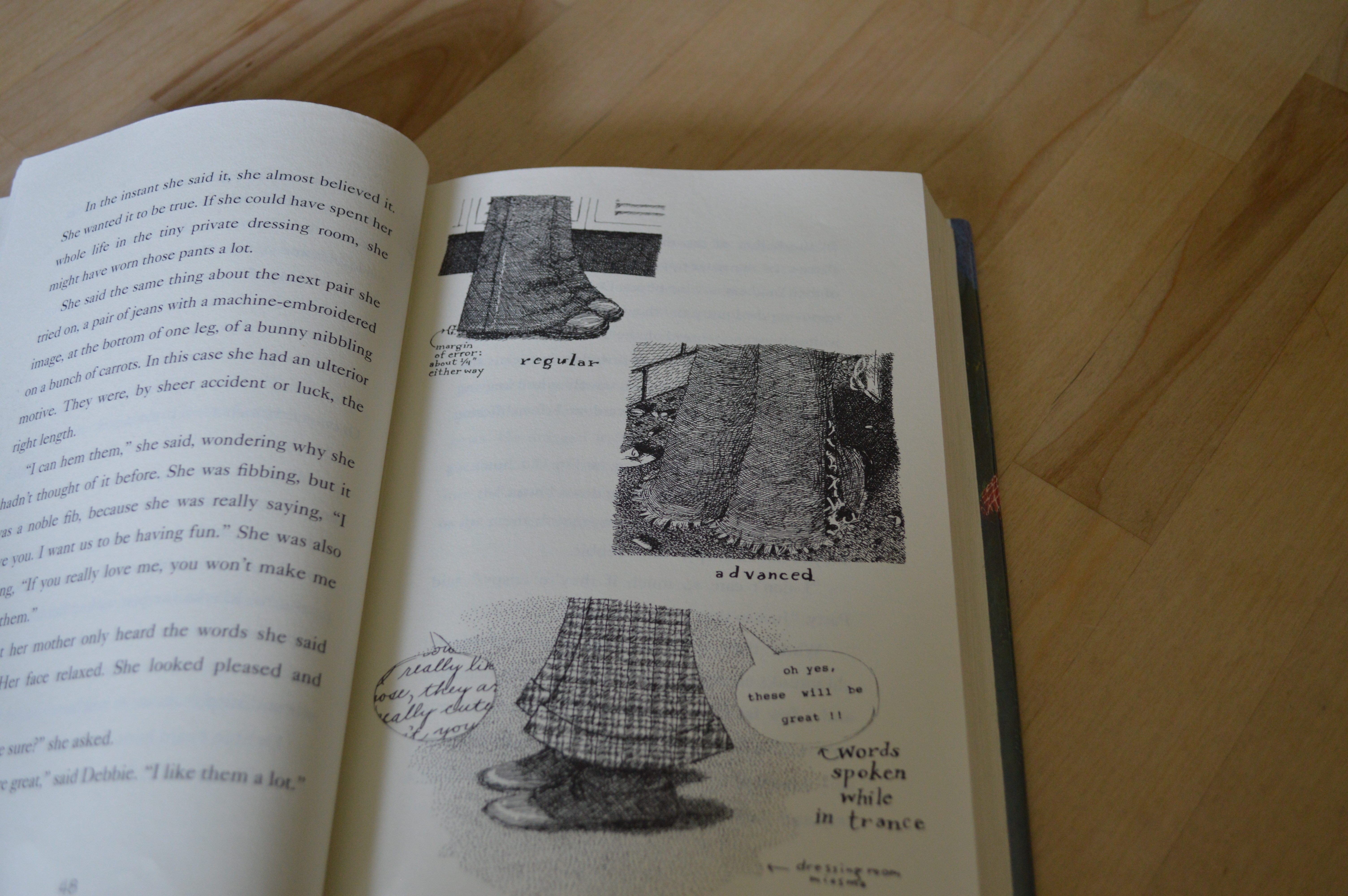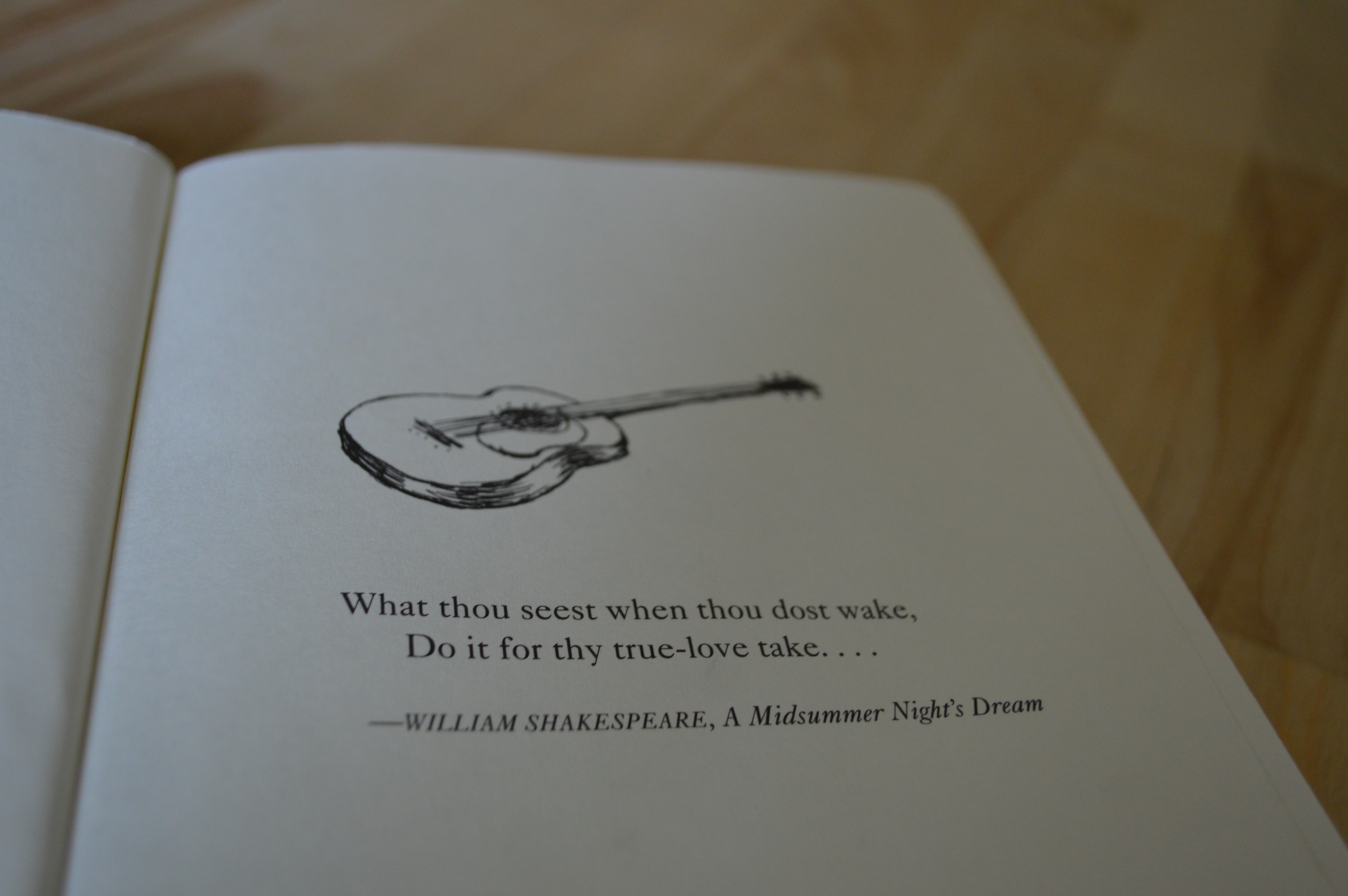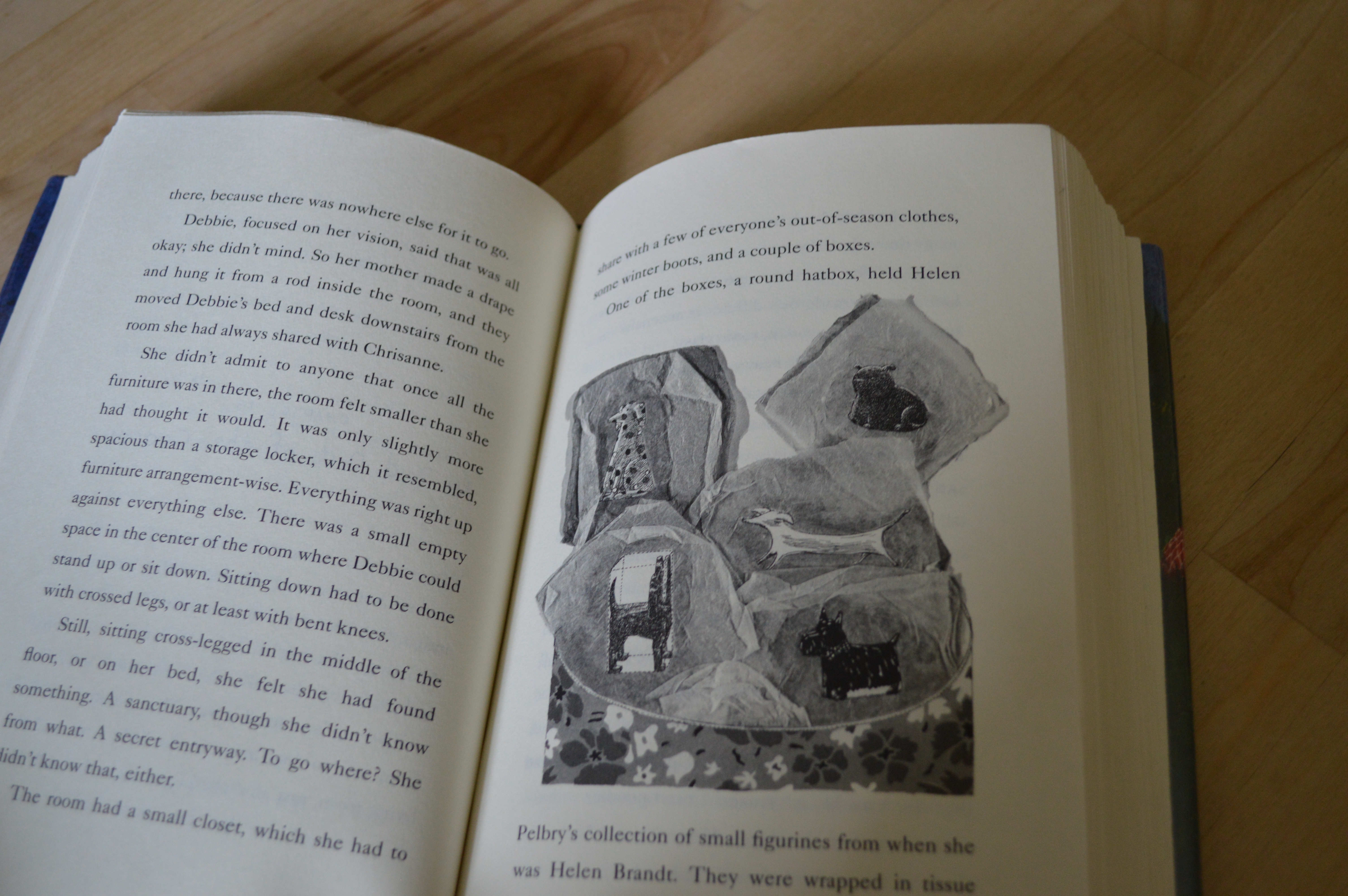
2006 Newbery winner, Criss Cross, by Lynne Rae Perkins, tells the story of four teenagers on the verge of high school who have crisscrossed paths, switching narrators each chapter as they tell and retell the story of their summer. Incorporating illustrations, poetry, and connected small vignettes, the book is loosely based on Shakespeare’s A Midsummer Night’s Dream and tells the story of young teenage summers, love, and friendship.

What I liked. To me reading Criss Cross felt a little bit like watching a Wes Anderson Film (Moonrise Kingdom [PG-13] is one of my favorites, although many of his films are just a little too odd for me) with its attention to small details and stories within stories and quirky characters who are both tragic and sweet. The whole thing felt like it really captured the experience of being that age with all the connection to family and friends, finding yourself, and paying attention to small details. I thought the argument about whether Debbie could wear cool long pants, and her mother being concerned about them being too long and fraying just seemed so incredibly spot on to the experience of being a teen and being a mother. I also loved the sweet young love story of the grandson from California. It was one of my favorite parts of the book.

What was interesting I liked the use of illustrations and graphics to enhance the story. Lynn Rae Perkins primarily trained as an artist/illustrator (you can read her great story about beginning to write on her website) and the words and the visuals really combined to make a whole atmosphere of small details and layered story telling. (There are a few bits where the characters each have their own stories in parallel columns. That also occurs a bit in the Newberies Good Masters! Sweet Ladies! and Joyful Noise: Poems for Two Voices). As someone who takes pictures of the inside of Newbery books, I have noticed that in earlier years of the Newberies, it was more common to have illustrations, but less common since the mid 1980s. I’m sure there are interesting reasons for that move within middle grade literature as a whole.

What were some limitations. I did think the beginning chapters were a little disjointed. The story came together in the end really nicely, with lots of tie-ins and payoffs, but it was easy to just read a bit at the beginning and put it down for a while.

Similarity to other Newbery winners. With its multiple points of view (switching each chapter) Criss Cross is similar to The View from Saturday. It has a little bit of young love like The Witch of Blackbird Pond, A Wrinkle in Time, It’s Like This, Cat, Up a Road Slowly, Summer of the Swans , Dicey’s Song and A Year Down Yonder. In Criss Cross the characters are all at the very end of middle school or beginning of high school, and there is no epilogue or ending that jumps ahead in time, but there are a few Newberies where the book ends with a wedding of characters who have grown up like (The Witch of Blackbird Pond, Up a Road Slowly, The Hero and the Crown and A Year Down Yonder). It is interesting to me that romance in middle grade novels is really optional; many novels do not address romance at all, and others have it as a strong (but usually not a main) plot line. It would, on the other hand, be a very unusual YA (Young Adult) book that did not have a romantic plot line as an important part of the book, let alone a YA book with no romance in it at all.

What it teaches me as a writer. I think the mixed media and the unique voice of Lynn Rae Perkins’ book makes me feel encouraged that all the little things that a writer can do, can notice, can treasure, all of that can come together to create a unique book that is universal because of its specifics. Keep noticing what only you seem to notice!

Have you read Criss Cross? What are your favorite novels that capture the real little details of middle school and high school life?
*Note* This post contains Amazon affiliate links, which means if you were to buy a book, I’d get a tiny commission at no cost to you. Thanks for supporting Stories & Thyme!*